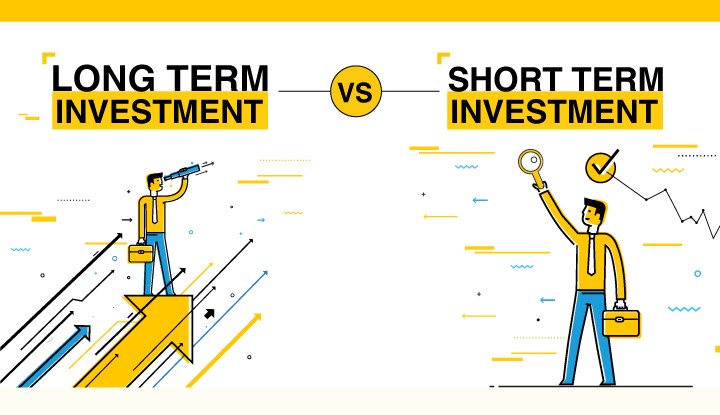Long-Term vs. Short-Term Investments
 |
| Investment Strategies |
Investing is a way to grow your money over time, but not all investments are the same. They can be broadly categorized into two types: long-term and short-term investments. Understanding the differences between these two can help you make better financial decisions.
Long-Term Investments
Long-term investments are those that you plan to hold for several years, often five years or more. These investments are typically used for goals like retirement, buying a house, or funding a child’s education. Because they are held for a longer period, they have more time to recover from market fluctuations and downturns.
Examples of Long-Term Investments:
- Stocks: Buying shares in a company and holding them for many years.
- Real Estate: Purchasing property to sell or rent out in the future.
- Retirement Accounts: Investing in accounts like 401(k)s (offered through employers) and IRAs (individual retirement accounts).
These accounts let you invest in various financial instruments like stocks, bonds, and mutual funds. Contributions are usually tax-deferred, meaning you pay taxes when you withdraw the money. Over time, the accounts grow through compounded interest.
Advantages:
- Potential for Higher Returns: Over time, long-term investments can grow significantly.
- Compounding: Earnings from these investments can be reinvested to generate even more earnings.
- Less Stress: You don’t need to worry about daily market changes.
Disadvantages:
- Illiquidity: Your money is tied up for a long time and not easily accessible.
- Market Risk: While they can recover from downturns, there is still a risk of loss.
Short-Term Investments
Short-term investments are those that you plan to hold for a shorter period, usually less than five years. These are often used for immediate financial goals like saving for a vacation, a car, or an emergency fund. Because the investment period is shorter, these investments need to be more stable and less risky.
Examples of Short-Term Investments:
- Savings Accounts: Keeping money in a bank account that earns interest.
- Certificates of Deposit (CDs): is a special savings account where you deposit a fixed amount of money for a set period. In return, the bank pays you a fixed interest rate.
- Short-Term Bonds: are a type of debt security that typically mature in a relatively short period , usually between one two five years.
Advantages:
- Liquidity: Your money is more accessible when you need it.
- Lower Risk: These investments are generally safer and less volatile.
Disadvantages:
- Lower Returns: They typically offer lower returns compared to long-term investments.
- Inflation Risk: The returns might not keep up with inflation, reducing your purchasing power over time.
Conclusion: Long-Term vs. Short-Term Investments
Choosing between long-term and short-term investments depends on your financial goals and risk tolerance. Long-term investments, such as stocks, real estate, and retirement accounts, are ideal for goals like retirement or buying a house. They offer potential for higher returns and benefit from compounding, but they come with risks and less liquidity.
On the other hand, short-term investments, like savings accounts, CDs, and short-term bonds, are suitable for immediate financial needs. They provide liquidity and lower risk but generally offer lower returns and may not keep up with inflation.
Ultimately, a balanced approach, considering both types of investments, can help you achieve a diversified and resilient portfolio.

.jpeg)




![Completion of 23rd AGM of SWBBL [SWBBL]](https://blogger.googleusercontent.com/img/b/R29vZ2xl/AVvXsEgZQST2IMzGKVSTDsQoxqkjcpmvPNUE9073o8Dx3fBAn6TpUsJybg3dY-DPwbTHZmFdNU6MQd7DSs_sr6VmPBSdycKfSYSs8FjwzVcvHt3lIrZL76Hg2L18Go8NX_XyPqujVQGNcWBSBL7c7m9r3Bn5ejG7tj4C-hnBi28B_eMEL6wy3H4b88GKBzEqaML_/w72-h72-p-k-no-nu/1731661995544.jpg)



.jpeg)
0 Comments